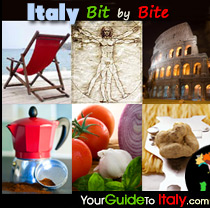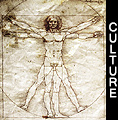As Italians are very innovative and fashion-conscious people, trends are omni-present in social life. Many objects that were at their time launched as new trends, became true concepts and internationally recognizable words.
The word Vespa, the scooter created by Piaggio, evokes memories of free time, youth gathering together, joy, beautiful weather, a concept that is absolutely international.
The Fiat 500, likewise, is emblematic of the italy. Like the Vespa, it became a symbol of freedom and democratization associated with Italy's rapid postwar recovery.
New trends taking off in Italy are not necessarily Italian in origin. The Smart car, for example, is well on its way to replace the Fiat 500, especially in towns like Rome, where the size of the car tends to be reversely proportionate to the importance of the driver, given the special allowances needed to enter tiny streets of the historical center of Rome by car.
New technologies or brands, once introduced on the Italian market may rapidly develop into a real rage, much like the love-affair of Italians and their telefonino. There is a kind of thirst for new trends that is rarely seen in other countries. More than in any other country, new technologies or brands, here, stand a high chance of becoming THE trend of the season, provided they are properly advertised and introduced on the Italian market. When Italians immigrate in other countries the good stuff they bring with them often becomes fashionable there.
Italians are also famous for their creating new trends, especially in fashion, but also in food and cars.
Italy is known also for its fashion houses; Versace, Valentino, Fendi, Gucci, Prada, Cavalli, Sergio Rossi, Dolce & Gabbana, Benetton, Armani and others.
Ferrari, Maserati and Lamborghini are all associated with top-of-the-line carmaking, but the main Italian car producer, FIAT, has a mediocre reputation in Italy and abroad.
Famous Italian foods have been brought to the rest of the world through Italian emigration, especially to the United States, the United Kingdom, the rest of Europe, but also in Canada and Australia. In their country of adoption Italian foods often superceeded local foods in popularity. Popular Italian foods include a multitude of pasta dishes (originating in 1500s Italy), pizza (born in 1800s Naples), ice cream, parma ham, rice, parmesan cheese and wine. Today this fancy for italian foods has not diminished and a new trend is developing in promoting italian gourmet food such as white truffles, balsamic vinaiger.
Quality goods in which Italy specialises are often DOC or 'of controlled origin'. This DOC certificate, which is attributed by the European Union, ensures that the origins and work that goes into a product are recognised. This certification is considered important by producers and consumers alike, in order to avoid confusion with low-quality mass-produced ersatz products, such as Cambozola, a German copy of Gorgonzola.
.
.
.











